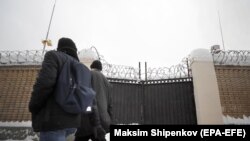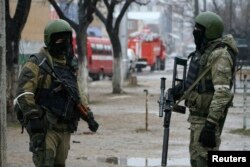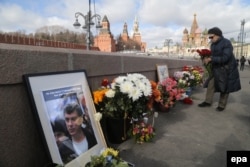[Update: This story has been updated with new information and context from an assistant professor of criminology and expert on violent crime and homicide in Russia. The verdict is unchanged. This story was originally published January 5, 2019].
Following the December 28, 2018 arrest in Moscow of Paul Whelan, an American citizen charged with espionage, former U.S. Ambassador to Russia Michael McFaul tweeted:
“I often get asked if it’s safe to travel to Russia as a tourist or student. I always used to say yes, and with enthusiasm. After Whelan arrest, however, I will change my advice.”
This tweet elicited a strong reaction from Danielle Ryan, a Dublin-based freelance journalist.
Writing for RT, the Russian state media outlet, Ryan attacked McFaul for changing his position on the safety of traveling to Russia in the wake of the Whelan arrest: “Miraculously, the arrest of one American seems to have changed everything. It is unlikely, however, that McFaul issued similar advice to his Russian friends after the arrest of Russian citizen Maria Butina, who last year was accused of acting as a foreign agent in the United States without proper registration.”
Ryan writes that the assumption would never be made that the U.S. is unsafe for Russian tourists based on Butina’s arrest, adding that is not because the U.S. is a “crime-free paradise where justice reigns supreme.”
“No, it’s because of endless and tiresome double standards imposed on Russia by both US officials and the media,” she wrote. “It’s always one assumption for the US and another for Russia; Whelan is an American arrested in Moscow, so he must be innocent (and Russia must be dangerous), but Butina was a Russian arrested in Washington DC, so she must be guilty (and the US is simply seeking justice). Facts and evidence become irrelevant in the rush to compound the ‘correct’ narrative.”
Butina, in fact, pleaded guilty on December 13, 2018 to conspiracy and acting under the direction of the Russian government.
In her plea deal, Butina admitted to conspiring with a Russian official and two Americans to infiltrate the National Rifle Association to create unofficial lines of communication between Russian officials and U.S. conservatives, with the goal of advancing Russia’s interests. As part of her plea deal, one count of acting as a covert foreign agent was dropped. She faces a maximum of five years in prison and the prospect of deportation upon completing her sentence.
The case surrounding Whelan, a Canadian-born former U.S. Marine and security executive who has British and Irish citizenship, is unclear.
A security source told the Russian news agency Rosbalt that Whelan was caught “red-handed” in his Metropol hotel room receiving a flash drive with a list of employees of a Russian security agency.
Rosbalt is run by Natalia Cherkesova, the wife of Viktor Cherkesov, a Putin associate, former first deputy director of the Federal Security Service and former head of Russia’s Federal Drug Control Service.
Regarding the thumb drive, Journalist Julia Ioffe tweeted that Russian police and secret services are notorious for planting evidence on suspects. She added: “Doesn't mean that Whelan is not a spy, but just something to keep in mind.”
John Sipher, who ran the CIA’s operations in Russia, told the Washington Post the agency would “almost never send someone to Russia without diplomatic immunity.”
“Given the laxity of Russian laws and the aggressiveness of their espionage apparatus, we could not guarantee the safety of someone traveling under unofficial cover,” Sipher said.
Journalist Julia Davis said that Whelan's lawyer, Vladimir Zherebenkov, who has represented “numerous” senior Russian government officials, has already floated the idea of an exchange for Butina.
“This is a long process,” Davis quoted Zherebenkov as saying. “I myself hope that we can rescue and bring home one Russian soul.” -- to which McFaul commented: “Sounds like Zherebenkov is representing Butina, not Whelan.”
If convicted, Whelan faces 20 years in prison, which would make him the first U.S. citizen sentenced in Russia on espionage charges since the conviction of Edmond Pope in 2000.
In response to Ryan, McFaul wrote that “a regime that arbitrarily arrests foreigners is a dangerous one.” But regarding Whelan’s guilt or innocence, he added: “If Im wrong about Whelan, Ill delete tweet.” (sic)
McFaul later tweeted that the State Department had issued a travel advisory saying “exactly the same thing” as he had written: “[E]xercise increased caution due to terrorism, harassment, and the arbitrary enforcement of local laws.”
The State Department further said that “U.S. citizens visiting or residing in Russia have been arbitrarily interrogated or detained by Russian officials and may become victims of harassment, mistreatment, and extortion.”
It further notes that “terrorist attacks and risk of civil unrest continue throughout the North Caucasus region, including in Chechnya, North Ossetia, Ingushetia, Dagestan, Stavropol, Karachayevo-Cherkessiya, and Kabardino-Balkariya. Local gangs have kidnapped U.S. citizens and other foreigners for ransom.”
Ryan also wrote that “Russia is as safe for American tourists (or any other tourists, for that matter) as any other European country is,” adding that “the fact that a former official who really should know better is perpetuating the myth of deep, dark, dangerous Russia is utterly ridiculous.”
We judge Ryan’s op-ed to be misleading at best, and major elements of her argument to be simply untrue.
It is true that the U.S. State Department lists Russia at a “Level 2” travel advisory -- the same as Belgium, Denmark, France, Germany, Netherlands, Serbia, Spain, Britain, Italy, Ukraine and Bosnia and Herzegovina. The State Department updated its judgment on Russia in mid-December, before the Whelan arrest.
Consider, also, information gleaned from the United Nations.
Citing the United Nations Office on Drugs and Crime (UNODC), Alexandra Lysova of Simon Fraser University, Vancouver, Candadaand Nikolay Shchitov of the Far Eastern Federal University, Russia, noted that as of 2014, Russia’s homicide rate was “the highest in Europe and one of the highest in the world.”
That figure has dropped significantly, from a peak of 33 per 100,000 people in 1994 to 10.82 per 100,000 or 15,561 “intentional homicides” in 2016, according to the UNODC.
Lysova told Polygraph.info that while “improved quality of life and political stability in Russia in the 2000s” could potentially explain the declining murder rate, a so-called ‘decivilizing process,’ characterized by rampant corruption, predatory policing, political repression, state violence against businesses, rising xenophobia and apathy, could “likewise be expected to be associated with a less precipitous decline in homicide or stable homicide rate in this period.”
Lysova, assistant professor in the School of Criminology at Simon Fraser University and once a professor in Vladivostok, Russia said she shares the concerns of other Russian criminologists who doubt that murder rates dropped as precipitously as the statistics show.
“By considering legal mechanisms alone, the more accurate homicide rate may be at least 1.6 times higher than that reported by the police and reprinted in the UNODC Global Study on Homicide 2013. Sergey Inshakov in his book on a dark figure of crime in Russia (2011) also suggested that there was no a precipitous decline in murder rates and that the real murder rates were much higher than those reported by the police in the 2000s.”
Although Ryan “felt safer” walking in Moscow after dark than Washington D.C. or Budapest, nationwide, Russia has a higher per capita homicide rate than Hungary or the United States.
For 2016, the UNODC registered 17,250 intentional homicides in the United States or 5.35 per 100,000 people – roughly half the level in Russia.
The rate in Hungary was 2.07 per 100,000 or 202 intentional homicides.
Statistically, however, Moscow is a much safer city than Washington D.C. in terms of intentional homicide.
According to the Russian Federal State Statistics Service, Moscow city itself registered 2.5 murders per 100,000 people, while Moscow region registered 6.9 murders per 100,000 people.
In Washington D.C., there were 116 homicides in 2017 or 17 per 100,000 residents, making it America’s 16th most dangerous city, according to an analysis conducted by USA Today.
Homicide statistics for Budapest that year were unavailable.
But as Lysova noted, the statistics in Russia’s case do not tell the entire story.
And it is not just homicide. Lysova said a quick scan of police statistics for showed that there had only been 3,900 reported rapes for all of 2015.
“I think it’s reasonable to expect that the number of rapes, including attempts, should exceed the number of homicides, including attempts,” she said. “Some unofficial estimates of 10,000 people who became victims of rape in Russia in 2015 seem more realistic. Organizations that help female victims of sexual abuse in Russia provide estimates that only 10-12% of rape victims actually report incidents to the police in Russia. Victims are ashamed and afraid they will not be treated by the police fairly and with respect. Moreover, even if victims decide to report the incidents to the police, only one in about five incidents would be accepted and investigated by the police.”
It is currently too early to determine if the cases of Whelan and Butina are commensurate. Any conclusions (or comparisons) at this point would be purely speculative.
But Polygraph.info finds that Ryan’s claim that Russia is as safe for American tourists as any other European country is misleading.










